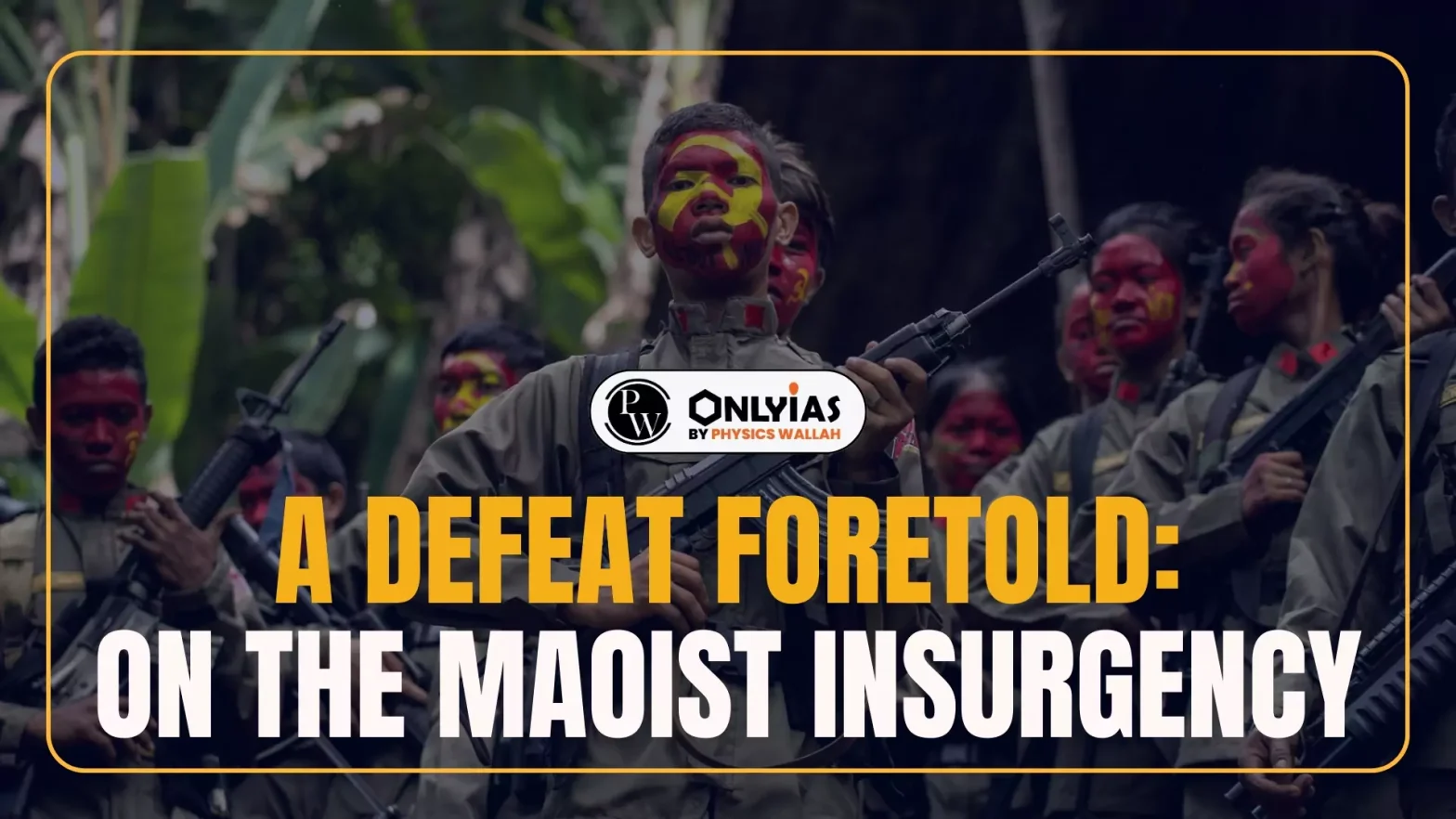In a major victory against Maoist insurgency, 31 Maoist cadres, including senior leaders, were killed in Chhattisgarh’s Abujmadh region. This encounter marks one of the largest Maoist casualties in the state’s 24-year history, signalling further weakening of the insurgent movement.
| Abujmadh is an unsurveyed and forested stretch in south Chhattisgarh that is considered the last bastion of the insurgents. |
Weakening of Maoists
The Maoist insurgency in India has significantly weakened over time, with numerous encounters and surrenders across Chhattisgarh and other states. Coordinated operations by paramilitary forces and the police, backed by the Union Home Ministry, have inflicted heavy losses on the insurgents.
Enroll now for UPSC Online Classes
Key Reasons for the Decline
- Diminished Tribal Support: Maoists have lost the support of tribal communities, which once formed their backbone. After years of putting these populations in harm’s way, the insurgents now face alienation and fatigue.
- This shift has allowed security forces to succeed in their campaigns.
- Over-reliance on Militarism: The Maoist strategy’s over-dependence on armed struggle, rather than political-ideological work, has alienated potential supporters, especially among the poor tribal populations.
- Outdated Ideology: Maoist ideology, rooted in an outdated revolutionary model from 1920s China, fails to grasp the strength of Indian democracy.
- Unlike China, India’s diverse political landscape and strong democratic institutions do not allow for violent revolutions to succeed.
- Global Trend: Similar left-wing insurgencies in Peru, the Philippines, Malaysia, and Colombia have also collapsed, signalling that such movements are unsustainable.
- The Indian Maoist insurgency is following a similar trajectory of failure.
Check Out UPSC Modules From PW Store
Conclusion
Despite setbacks, the Maoists remain ideologically rigid, as reflected in their August pamphlet marking 20 years. To truly serve the tribal people they claim to represent, they must abandon violence and engage with India’s democratic process.
![]() 7 Oct 2024
7 Oct 2024

